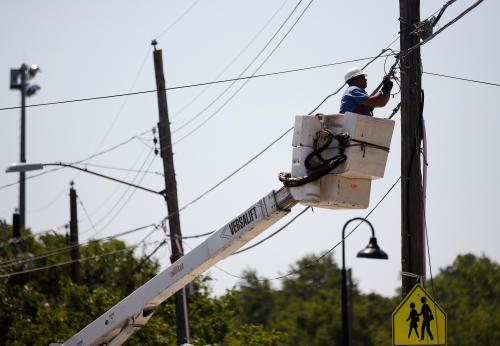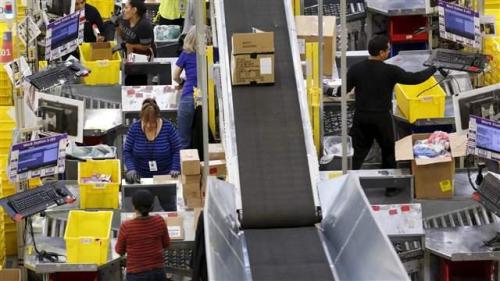This piece originally appeared in Washington Monthly. As of June 15, 2020, this piece has been republished with some clarifications, including an updated title and information about the Bureau of Labor Statistics’ survey methodology.
The Bureau of Labor Statistics (BLS) surprised the markets and most economists earlier this month with an announcement that the unemployment rate fell from 14.7 percent in April to 13.3 percent in May. President Trump hailed the numbers as “a very big day for our country” and “affirmation of all the work we’ve been doing, really for three and a half years.” He also used his remarks on the jobless numbers to praise his administration’s work on the pandemic and urge governors to “use our National Guard. Call me. We’ll be ready for them so fast their heads will spin.” Beyond the president’s asides, there are good reason to be skeptical of the latest unemployment report.
BLS reported that 20,935,000 Americans were unemployed in May, attributing the decline to employers adding 2,509,000 jobs in May as states allowed “a limited resumption of economic activity.” But it’s not that simple. The unexpected decline in the jobless rate is based on a survey of households conducted over the week of May 11th to May 16th, and BLS has also reported that 29,965,415 Americans received unemployment insurance benefits in the same week. That’s a gap of 8,980,415 people.
How should we understand the gap? Part of it is the Payroll Protection Program: The BLS counted anyone who employers say were still being paid as employed “even if they were not actually at their jobs.” Further, part of the gap involves part-time workers. In most states, you may be eligible for partial unemployment benefits if you work part time, and the number of people working part-time jumped by 2,283,000 in May. That still leaves a gap of 6,697,415, enough to raise the jobless rate to 17.5 percent and much closer to most economists’ expectations.
Another issue involves how the BLS treats the many millions of people now on furlough and not being paid. They are considered “unemployed on temporary layoff.” But the BLS notes, as it did in the April jobless report, that “some people who were not at work during the entire reference week were not included in this category. Instead, they were misclassified as employed but not at work.” The Bureau also concedes that if those considered “employed but absent from work” had been classified as unemployed in May, it would have raised the official rate to 16.3 percent.
Of great concern is the fact that, recent research suggests that millions of people on “temporary layoff” will find themselves permanently unemployed. An analysis from the Becker Friedman Institute at the University of Chicago estimates that 42 percent of people furloughed by the Covid crisis will never get their old jobs back, and only 30 percent of those laid off will land new jobs later this year.
Finally, part of the 6.7 million-person discrepancy may involve how BLS decides whether a person not working is still part of the labor force. If you are out of work but didn’t look for a job over the previous four weeks, or couldn’t work for family reasons such as caring for children who are no longer in school, BLS says you are out of the labor force. If you’re not in the labor force, you’re not unemployed.
Using its traditional categories, BLS determined that millions of people who lost their jobs because of Covid shutdowns should not count as unemployed because they decided to leave the labor force entirely. In February, the last month before Covid-related layoffs began, BLS calculated that 95,082,000 working-age Americans were not in the labor force. By May, it determined that the number had jumped 6,738,000 to 101,820,000. For reference, from February 2019 to May 2019, that number increased 734,000. The 6,004,000 difference between February to May of 2019 and this year also could cover much of the unexplained gap between the number of people that BLS reports having received unemployment benefits and those that BLS counted as unemployed.
These calculations are not merely academic. The unexpectedly positive unemployment report, that BLS concedes included “miscalculation error” that lowered the official jobless number and rate, led the President to predict “a very good August, very good July … a spectacular… maybe spectacular September …” The danger here is that the Senate will not dig into the numbers and so refuse to join the House of Representatives in enacting more support and stimulus as the pandemic continues.
The Brookings Institution is committed to quality, independence, and impact.
We are supported by a diverse array of funders. In line with our values and policies, each Brookings publication represents the sole views of its author(s).






Commentary
Unpacking the May unemployment statistics
June 8, 2020